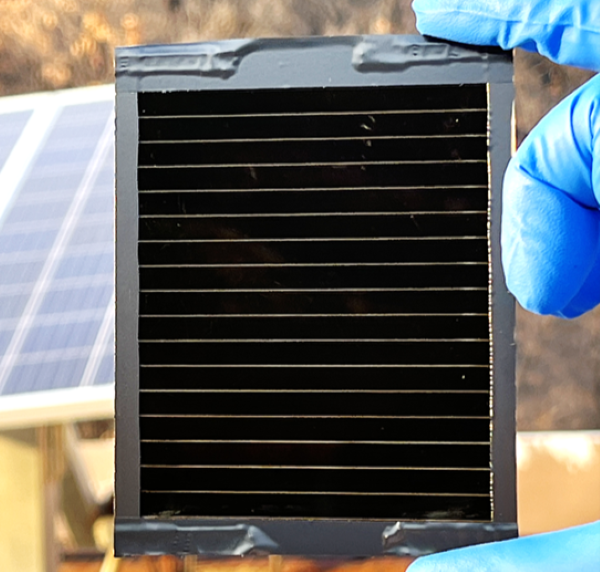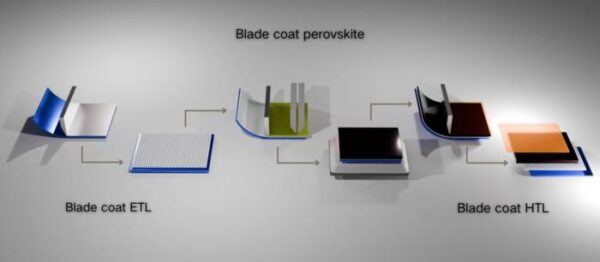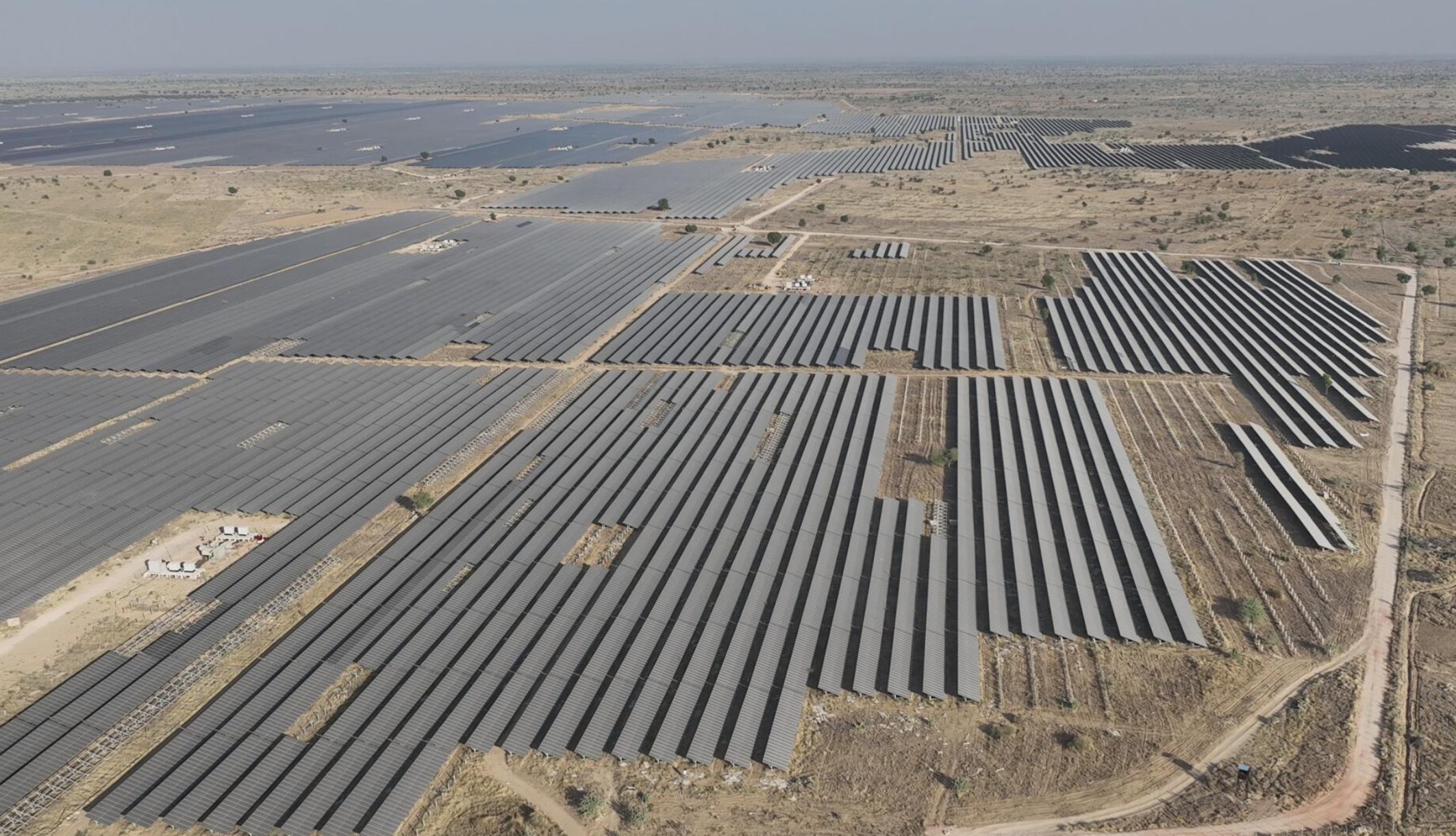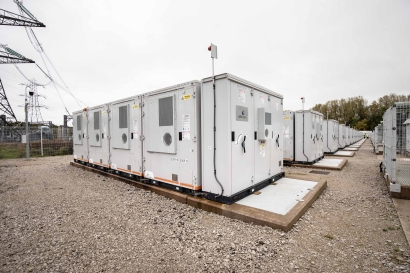Chinese researchers build 21.60%-efficient perovskite solar modules via blade coating
A research team led by the Dalian Institute of Chemical Physics in China have used tetramethylammonium chloride in the fabrication of perovskite solar cells and modules, demonstrating that it improved both stability and efficiency results. The group's 10 cm × 8 cm modules achieved certified 21.60% power conversion efficiency. The novel interfacial modification enabled the use of scalable blade coating to deposit both transport layers and the perovskite layer.

A research team led by the Dalian Institute of Chemical Physics in China have used tetramethylammonium chloride in the fabrication of perovskite solar cells and modules, demonstrating that it improved both stability and efficiency results. The group's 10 cm × 8 cm modules achieved certified 21.60% power conversion efficiency. The novel interfacial modification enabled the use of scalable blade coating to deposit both transport layers and the perovskite layer.
Researchers led by the Dalian Institute of Chemical Physics (DICP) have used tetramethylammonium chloride in a tin(IV) oxide electron transport layer precursor colloidal solution to address two well-known perovskite solar cell issues: long-term stability and the relatively low efficiency for large-area perovskite solar modules.
The approach reportedly strengthened interfacial bonding and reduced structural defects, resulting in the fabrication of tri-layer bladed devices that had promising stability results and power conversion efficiencies. They demonstrated 26.11%-efficient small cells and mini-modules with aperture areas of 57.2 cm2 certified at 21.60% efficiency.
The novelty of the research lies in the “synergistic integration of the scalable manufacturing process using blade coating and the innovative interfacial treatment of the tin(IV) oxide (SnO2) colloids” with tetramethylammonium chloride (TMACL), according to Xuejie Zhu, of Dalian Institute of Chemical Physics and first author of the research
“While blade coating enables low-temperature, large-area fabrication suitable for flexible perovskite modules, the use of TMACL as a bifunctional interfacial modifier is key to enhancing device performance,” Zhu told pv magazine, explaining that TMACL not only improved the “dispersion and film-forming properties of SnO2 colloids” but it also effectively passivated interfacial defects at the SnO2/perovskite interface.
In the study “Interfacial molecular anchor enhances performance of ambient all-bladed perovskite solar cells,” published in Joule, the researchers described the investigation and validation of the results in perovskite solar devices of various sizes, including how blade coating was used.
Zhu noted that TMACL treatment acts as a surface passivator that increases the formation energy of iodine vacancies and suppresses non-radiative recombination at the interface, leading to higher open-circuit voltage and fill factor.
It also enables relatively low temperature and lower cost fabrication thanks to blade coating processes. For example, the research team noted that low-temperature processing at 100 C is a “merit” of the approach, enabling fabrication of flexible solar devices.
The team said its experimental flexible perovskite solar cells achieved an efficiency of 23.54%, outperforming the control device that was made with pristine SnO2 ETL. Furthermore, it retained 95.30% of its initial efficiency after 500 bending cycles, compared to 63.17% for the control device.
Other benefits were noted by Zhu. “Unlike traditional spin coating, which relies on high-purity solvents and is limited to small-scale production, blade or printing-based coating allows continuous fabrication of meter-scale films, with material utilization rates exceeding 90% and energy consumption reduced by 50%,” Zhu explained.
It also costs “only one-tenth as much as conventional interface modification materials, and eliminates the need for extra processing steps.” This, combined with the performance, makes the “proposed method significantly more suitable for large-scale, cost-effective, and high-performance perovskite solar module manufacturing.”
The devices used in the experiments were made as follows: the blade-coated TMACL-SnO2 ETL was applied to conductive indium tin oxide (ITO) substrates, followed by nitrogen-air-blade-coating of the perovskite layer, followed by a thermal annealing step, and blade coating of the Spiro-OMe-TAD hole transport layer (HTL) and the metal electrode gold (Au) deposition.
Cross-sectional scanning electron (SEM) imaging confirmed a “close-perfect layer by layer integrity” of the ETL/perovskite/HTL structures, according to the research.
The devices had a lifetime of approximately 1,500 h, as verified by International Summit on Organic PV stability (ISOS) outdoor, ISOS-O, tests. The location of the testing in Dalian, China which had a typical relative humidity of 40% during the testing period.
The research team plans to continue the scaling work, producing uniform and robust self-assembled monolayers (SAMs) with blade coating techniques that exhibit reproducibility and large area device stability. “In addition to further optimizing interfacial engineering under ambient processing conditions, the team will prioritize in-depth studies on environmental durability, light-soaking stability, and mechanical resilience under repeated deformation,” said Zhu.
The participating research teams joining DICP in the effort were from China-based Liaoning Normal University, Hubei University, Eastern Institute of Technology, University of Chinese Academy of Sciences, Wuhan Textile University, and Zhejiang University, along with Australia’s University of Technology Sydney.
Image: Dalian Institute of Chemical Physics (DICP) of the Chinese Academy of Sciences

What's Your Reaction?






















































